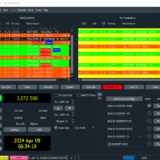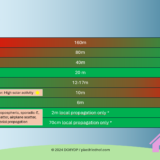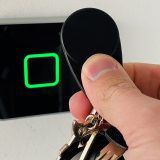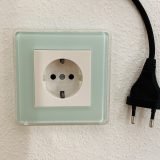what3words: The end of street name, house number and ZIPCODE
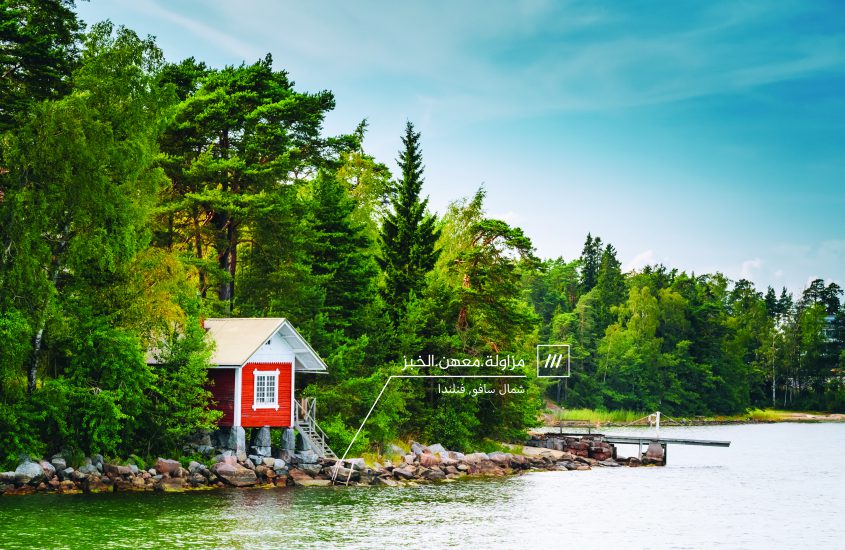
With only 3 words, any place on the planet can be determined accurately. Thus, even places can be found which cannot be found with a classical address system due to a lack of street names. For this purpose, the earth is divided into 9m² rectangles and each of these rectangles is assigned three consecutive words.
An address where there are no addresses
When we travel to Greece, I am faced with a challenge every year. At the local car rental company I have to leave our address of residence. But our holiday home is located on an unnamed access road outside the village. One reason why parcel deliveries do not work in this place. Every year I try to communicate in badly spoken Greek that we live about 600 m north of the point where the road “Ermou” makes a bend. Even if I succeed, nobody has any benefit from it. They won’t find me or the car.
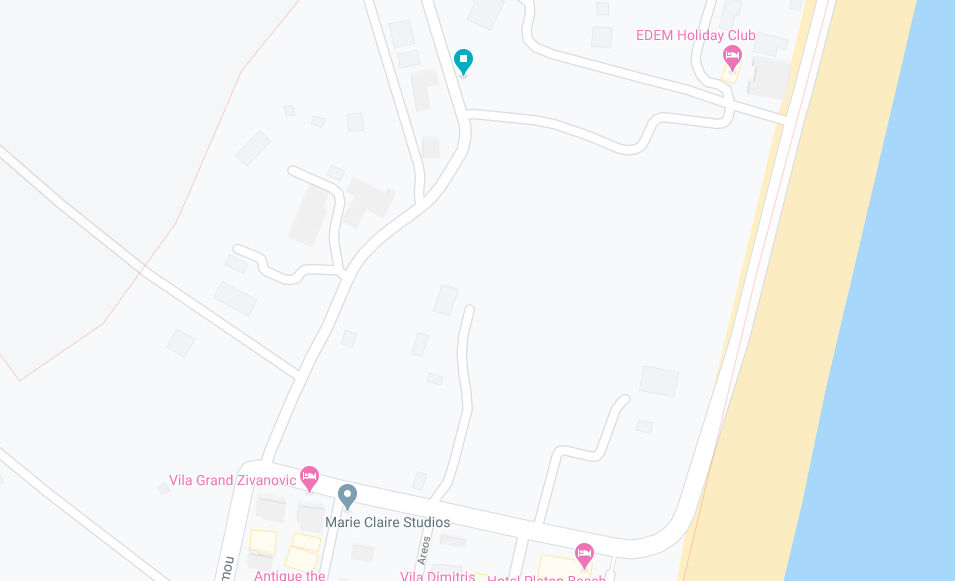
I am not the only one with this problem in Greece; desert and bushland dwellers, operators of AirBnBs in Bali or parcel services in Brazil also suffer from a lack of an address system for directions and positioning. In short: We need a simple address system that is suitable for everyday use, that is not as complicated as GPS coordinates, but still accurate enough to function reliably. The solution to this problem is provided by the startup “what3words” with its service of the same name.
“what3words” divides the surface of our planet into 3m² squares and assigns three consecutive words to each of these segments as an address.
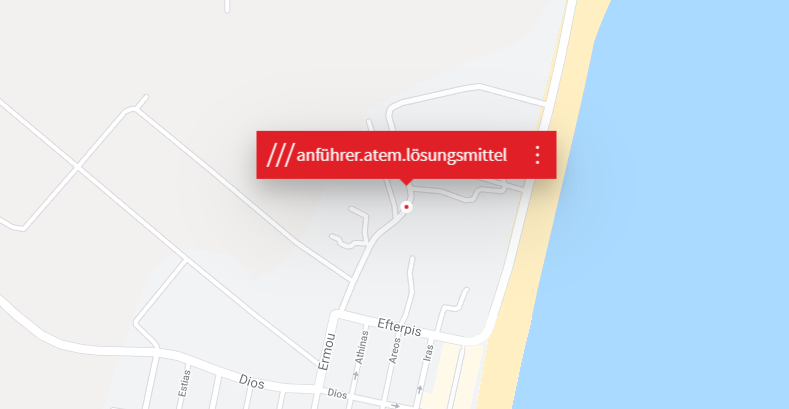
Simpler than coordinates, more detailed than Maidenhead Locator
The whole system reminds a little bit of the Maidenhead Locator used for example in amateur radio; a simplified coordinate system for position determination. The Maidenhead Locator divides the earth’s surface into 324 size fields, each size field into 100 large fields and each large field into 576 small fields. In the Maidenhead Locator, the large and small fields are each designated with two letters from AA to RR or AA to XX, the large fields with two digits each from 00 to 99. The Maidenhead Locator thus allows position information with an accuracy of 5′ in longitude and 2′ 30″ in latitude. With this accuracy, the system has 18,662,400 small fields.
“what3words” uses 57,000,000,000,000,000,000 (57 trillion) small fields instead and thus allows the unique addressing of every 9m² spot on earth.
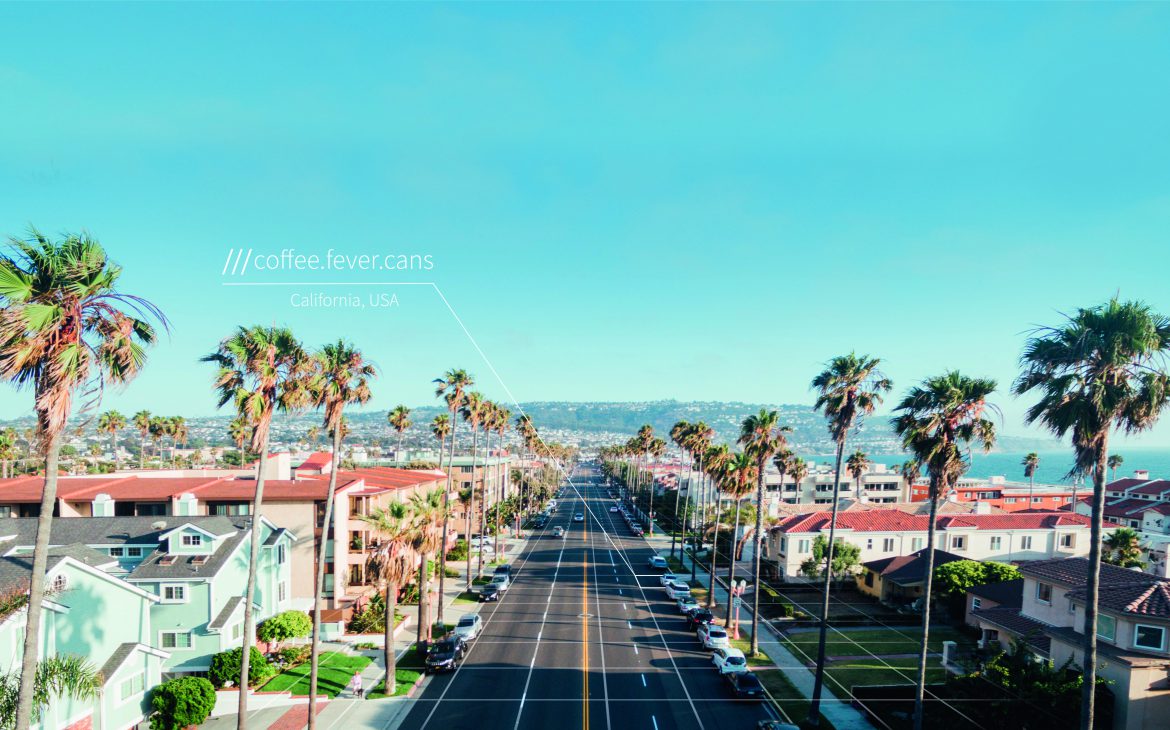
More flexibility than with normal addresses
When delivering deliveries to large companies, the normal address is sometimes of little help.
It is possible that there are several receiving points for deliveries and parcels on the same site with the same house number: Incoming goods for production, administrative reception, gatekeepers and the workplaces of individual employees fight for the deliverer’s favour and it is highly probable that an incoming parcel will end up at the wrong recipient. With “what3words” the exact destination can easily be determined on a map, even if several delivery points are located in the same area.
No duplicates
Do you know how many Church Streets there are in London? Finding the right street definitely requires some time and research to make sure you don’t suddenly find yourself in a place that just happens to have the same street name. That’s why districts, postcodes and other dimensions have to be used to find addresses.
In the age of human-to-machine communication, a mistake can easily be explained to a taxi driver, but when travelling in autonomous vehicles, it is important to make sure that the destination is really the right one before starting the journey. Renegotiations and complaints are difficult to enforce in this environment. So here, too, great potential is revealed.
Internationally usable in native language
The combination of three words used as an address can be used internationally, it only requires a translation. This means that the system can be used in any country, no matter which languages the user is familiar with or not.
When assigning words, “what3words” has chosen common words that exist in each language and has made sure that words that sound similar are used at a great distance from each other.
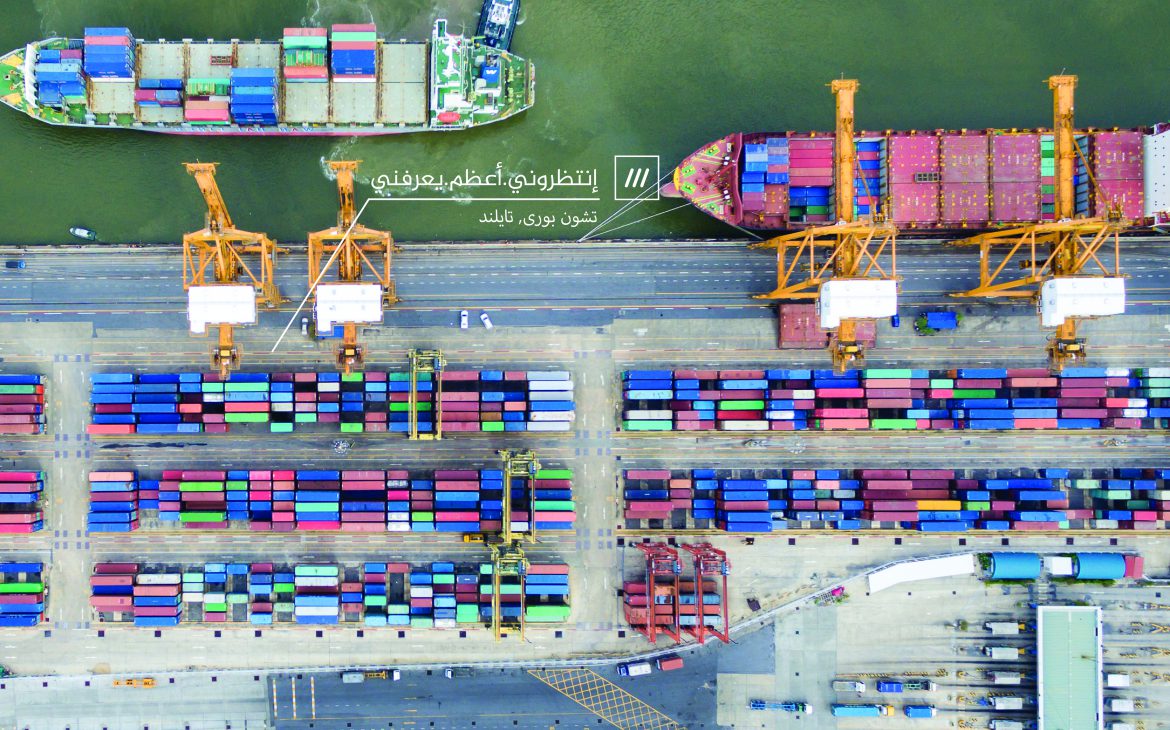
Fast transmission of positions in an emergency
Anyone who has ever transmitted a coordinate position by radio, for example in a maritime emergency, knows how time-consuming and error-prone this transmission is. The not very accurate position 61-10N 003-45E eats up a lot of time for transmission and repeating. Nevertheless, misunderstandings cannot be ruled out, due to the possibly poor voice quality, and cost important minutes in an emergency or even human lives in the worst case.
six one degrees one zero minutes north, zero zero three degrees four five minutes east
TRANSMISSION OF COORDINATES BY RADIO – 21 VALUABLE SECONDS AND STILL HIGH POTENTIAL FOR ERRORS
I repeat
six one degrees one zero minutes north, zero zero three degrees four five minutes east
Therefore “what3words” has potential even in time-critical rescue scenarios. In disaster areas, for example after earthquakes and tsunamis, “what3words” can help to locate places even if street signs and traffic infrastructure have been completely destroyed.
Broad acceptance across all industries
The address system of “what3words” has already convinced many industry leaders. The three-word addresses are now used by the Indian Post Office, Ford, the Indian car manufacturer Tata and the British police. Daimler and the railway subsidiary “Schenker” have recognised the potential and invested considerably.
